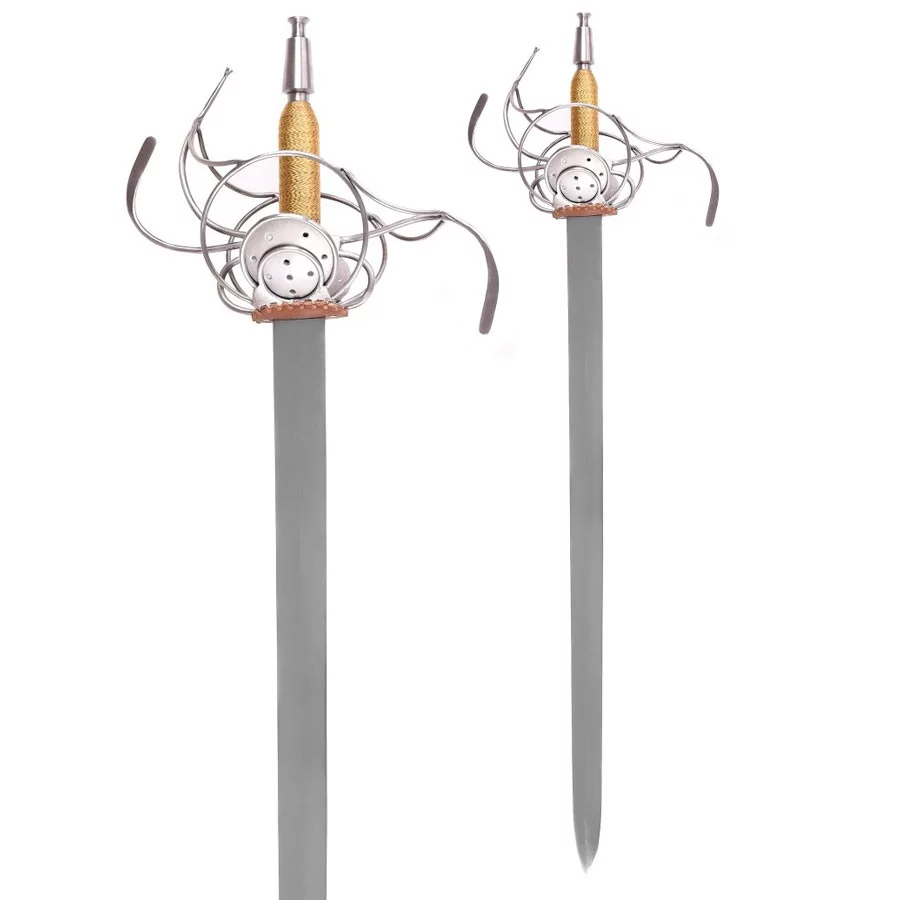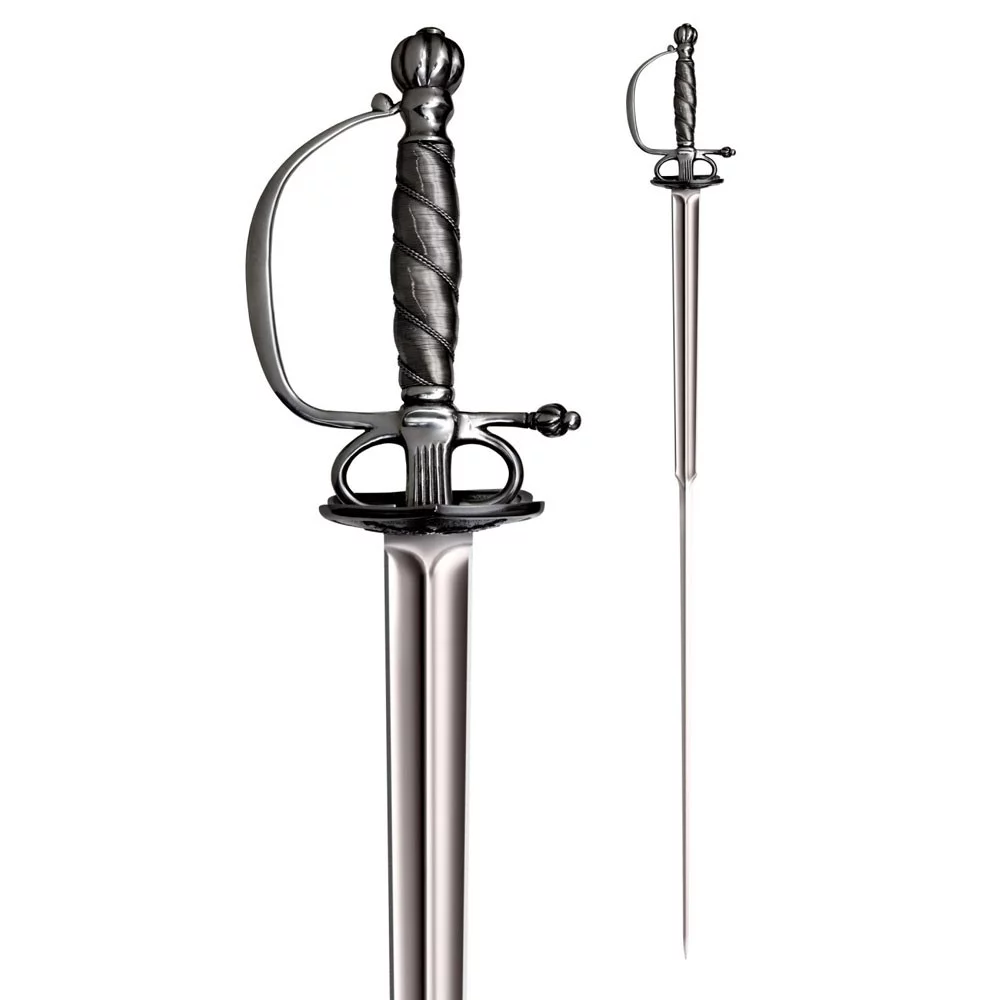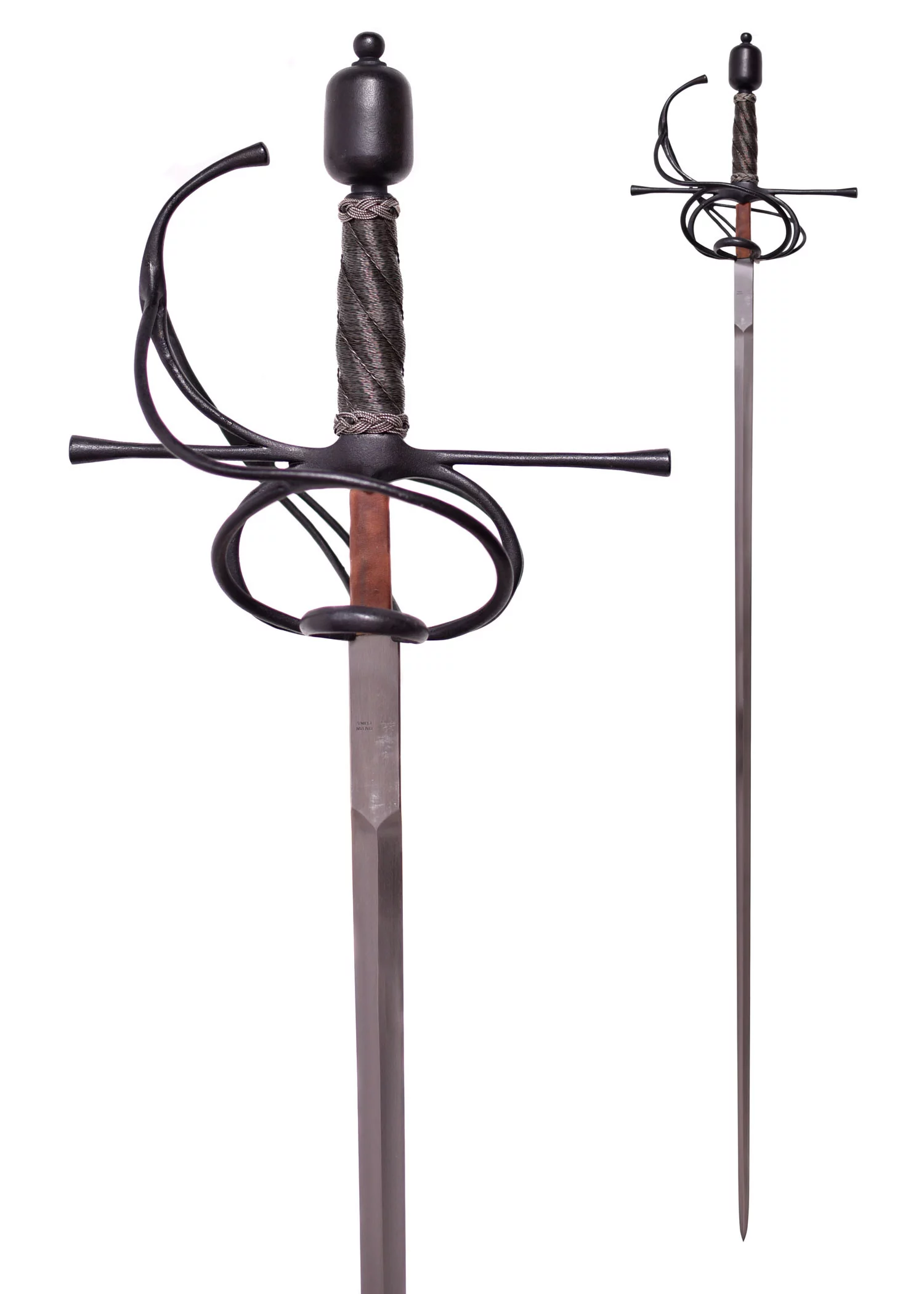Shopping Cart
There are no more items in your cart
Rapier and Small Sword
During the Renaissance and the Modern Age, two emblematic weapons held an important place in both clothing and personal defense: the rapier and the small sword. Both weapons shared similarities and differences in design, use, and evolution over the centuries. Below, we will analyze these characteristics in detail and their cultural impact.
Similarities between the Rapier and the Small Sword
- Civilian Weapons: Both swords were mainly used for personal defense and dueling, rather than for military combat.
- Design Inspired by Military Swords: Although their primary environment was civilian, their overall shape was inspired by military weapons of the time, adjusted to be lighter and more elegant.
- Innovations in Handles: The evolution of the handles was crucial, focusing on protecting the hand through significant innovations.
- Common Handles: Both in civilian and military contexts, handles with identical designs have been found.
- Similar Accessories and Decorations: Both swords utilized accessories such as belts, scabbards, and similar decorations, which also contributed to their historical classification.
- Usage Treatises: The handling styles and ornamentation of both weapons were documented in historical treatises, highlighting their relevance during the period.

Key Differences between the Two Weapons
- Appearance in History: The rapier emerged around the mid-15th century as an integral part of noble fashion, while the small sword took its place around the mid-17th century.
- Variety of Handles: The rapier was characterized by a wide variety of handle types, unlike the small sword, which had fewer variations, starting around 1654.
- Specific Design of the Small Sword: Unlike the rapier, the small sword featured side rings or shells separate from the main handle, with the blade passing through an opening between them.
- Regionalization of the Small Sword: In the 17th century, small swords began to develop regional characteristics in Spain and Italy, a distinction not observed in the same manner in rapiers.

Technical Characteristics
Rapier
- Blade Length: Ranging from 90 to 130 cm to allow dynamic fencing.
- Weight: Approximately 1 kg, providing lightness for quick handling.
- Balance Point: Located between 8 and 15 cm from the handle, improving stability.
- One-Handed Use: Favoring its combination with other defensive elements, such as bucklers or cloaks.
Small Sword
- Blade Length: From 1.09 to 1.14 m, designed to be effective in thrusts.
- Weight: Approximately 750 g, thanks to its triangular section, which also lent it rigidity.
- Use in Fencing: Ideal for dueling, with great skill for dodging and attacking, although unsuitable for slashing.

Cultural Impact
Rapier
- Fashion and Status: It was synonymous with power, refinement, and a distinctive symbol of the upper and middle classes.
- Utility in Duels: It integrated into daily fashion and was extensively used for personal defense.
Small Sword
- Fencing and Evolution: It is the predecessor of the modern sport fencing sword, with relevance in the development of the foil.
- Presence in Duels: Beyond its stylistic role, it was exceptionally effective in hand-to-hand combat.
These weapons not only served as tools of defense and fashion elements but also left a lasting mark on the cultural history of their respective eras, reflecting the evolution of fencing and the change in social and combat norms.
















